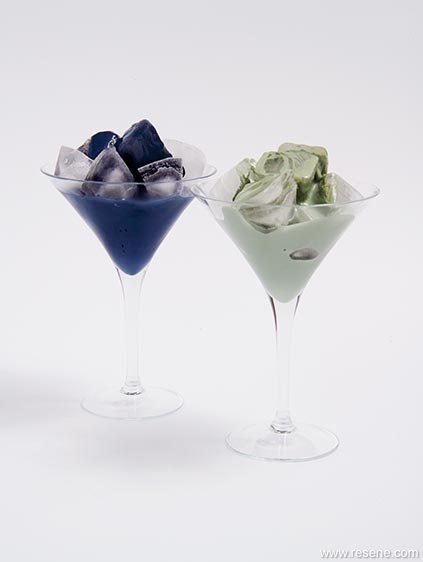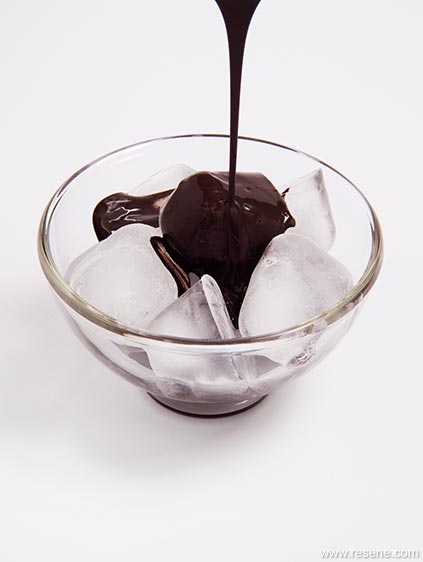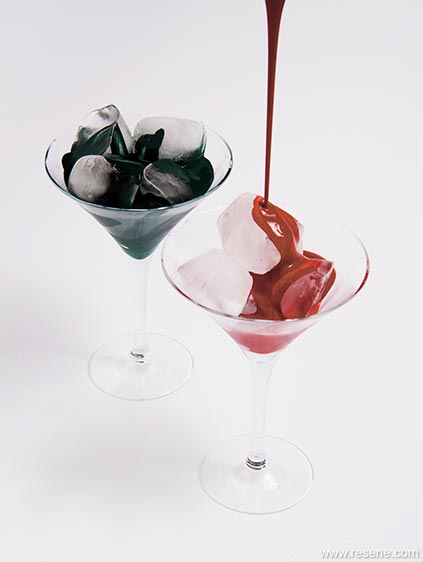From Habitat magazine - issue 06
Ever thought your house would look great repainted a sleek, dark colour – then had to shelve your plans for fear of the heat damaging the timber or substrate underneath?

Or maybe you’ve discussed the idea with friends, who’ve gloomily pointed out that “homes painted in dark colours get unbearably hot in summer”.
Well, forget all that. Resene’s CoolColour™ technology makes painting exterior surfaces in dark colours both easier and safer. It can be used on all sorts of exterior materials and applications, from weatherboards and concrete to windowsills.
First developed for high-gloss roof coatings, Resene CoolColours are now also available in a range of paints and stains. These include Resene Lumbersider satin acrylic, Resene Sonyx 101 semi-gloss, Resene Hi-Glo gloss acrylic, Resene Enamacryl gloss waterborne enamel, Resene X- 200 weathertight membrane, Resene Lustacryl semi gloss waterborne enamel, Resene AquaShield mineral effect and Resene Waterborne Woodsman.
And those nagging concerns about heat absorption and damage to substrates have been eliminated. How? In a nutshell, the colour looks the same as normal, but reflects much more heat – so it doesn’t get as hot as the standard paint would. The pigment technology allows the coating to retain its usual visible shade, but gives back heat from the surface, reducing stress on the coating and substrate, and limiting subsequent heat-related damage, thereby improving the life span of both. The technology also minimises the buildup of unwanted heat in the building, keeping air conditioning and cooling costs down.
Think back to when the new Cricket New Zealand black shirts were first introduced. Do you remember talk of a technology that stopped the black shirts absorbing the heat, making the clothing cooler for the sportsmen to wear? Resene CoolColour paint technology is basically the same – only instead of cricketer’s backs, it helps protects buildings and houses. Resene CoolColour technology works best in dark shades most prone to heat build-up. These include Resene Lumbersider Black, and tints such as Resene Karaka, Resene Nero and Resene New Denim Blue, among the many options.
The full Resene CoolColour system generally comprises a Resene Cool Primer plus two topcoats of Resene CoolColour topcoat. However, with some options, the Resene Cool Primer only adds minor improvements, so check with your local Resene ColorShop if you can use a CoolColour without the Cool Primer. They can confirm the technicalities before you start, to ensure the system will work well. And if you have a large enough job – generally 200 litres plus – the Resene team can also convert many non-list colours into CoolColours for you!
Resene CoolColour™ technology is something Resene technical director Colin Gooch and his team have been researching and developing for some time. It has involved looking closely into New Zealand’s environmental factors and blending pigments to achieve the right balance of colourfastness and durability.
“We didn’t want to restrict homeowners and architects from using dark colours. In doing so, though, we needed to come up with a way to protect substrates that were temperature sensitive – a pigment that could be put into binders and made into a paint safe to use on most applications,” says Colin.
“When looking at the role paint can play in temperature control in buildings, it comes down to colour,” he says. “The ability of white to reflect visible light extends through into the infra-red and, because of this, white surfaces remain relatively cool to touch, even in direct sunlight. The opposite is true of black and dark colours, which absorb light in this infra-red area, resulting in significant heat build-up in the surface. As the emissivity of paints is not particularly good, the surface heat is conducted into the substrate and then radiated into the building.” However, Colin points out that not all dark colours behave in this way.


“In terms of technology, Mother Nature had the trick and beat us by a few million years. Most plants have leaves of a very high chroma green – some of them are very dark indeed. If those leaves reached the same temperature when exposed to solar radiation as those of a similarly coloured paint, they would shrivel and die. The fact they don’t is because that pigment – chlorophyll – absorbs what it needs from the visible range to photosynthesise, but reflects the infra-red range, keeping the plant cool.”
Over the past decades, there have been vigorous efforts to create heat-resistant pigments in the ceramics industry, as most tints break down at the very high temperatures under which ceramics are fired. Novel ways were discovered of doping refractory metal oxides of titanium, zirconium, chromium, and so on, with other metal ions to produce a wide selection of high-temperature colours. More recently, the behaviour of these mixed oxides were examined under infra-red and the results showed an ability to withstand a range of very high temperatures. Focusing on this aspect, further refinements were made to maximise this for use in various commercial applications.
Using these findings, Colin and his team took the very popular COLORSTEEL® roofing colour Karaka and incorporated into it these infra-red reflecting pigments. Comparing the new blend against traditional coatings over a five-minute standard Resene test revealed a whopping 12°C degree drop in temperature. “This 12°C degree difference can make a tremendous difference to the stresses exerted on the substrate and can have a telling effect on its stability and heat gain,” explains Colin.
Since 2004, when it was initially launched in Resene Hi-Glo acrylic, Resene CoolColour technology has been in hot demand. It has since been extended for use on a variety of claddings, including aluminium, block and brickwork, concrete and plaster, fibre-cement, plywood, stucco and Zincalume®.
words: June-Ann Russell
pictures: Kallan MacLeod
Search habitat magazine stories
Printed copies of habitat highlights are available from late March 2024 at Resene ColorShops and resellers, while stocks last. You can view back issues of habitat magazine online.
Specifiers:
If you have an idea, project or story that you think would suit habitat, we’d love to hear from you. Please drop us an email with your details and include photos if submitting a project.
Sign up for a DIY card and Save! Australia | New Zealand